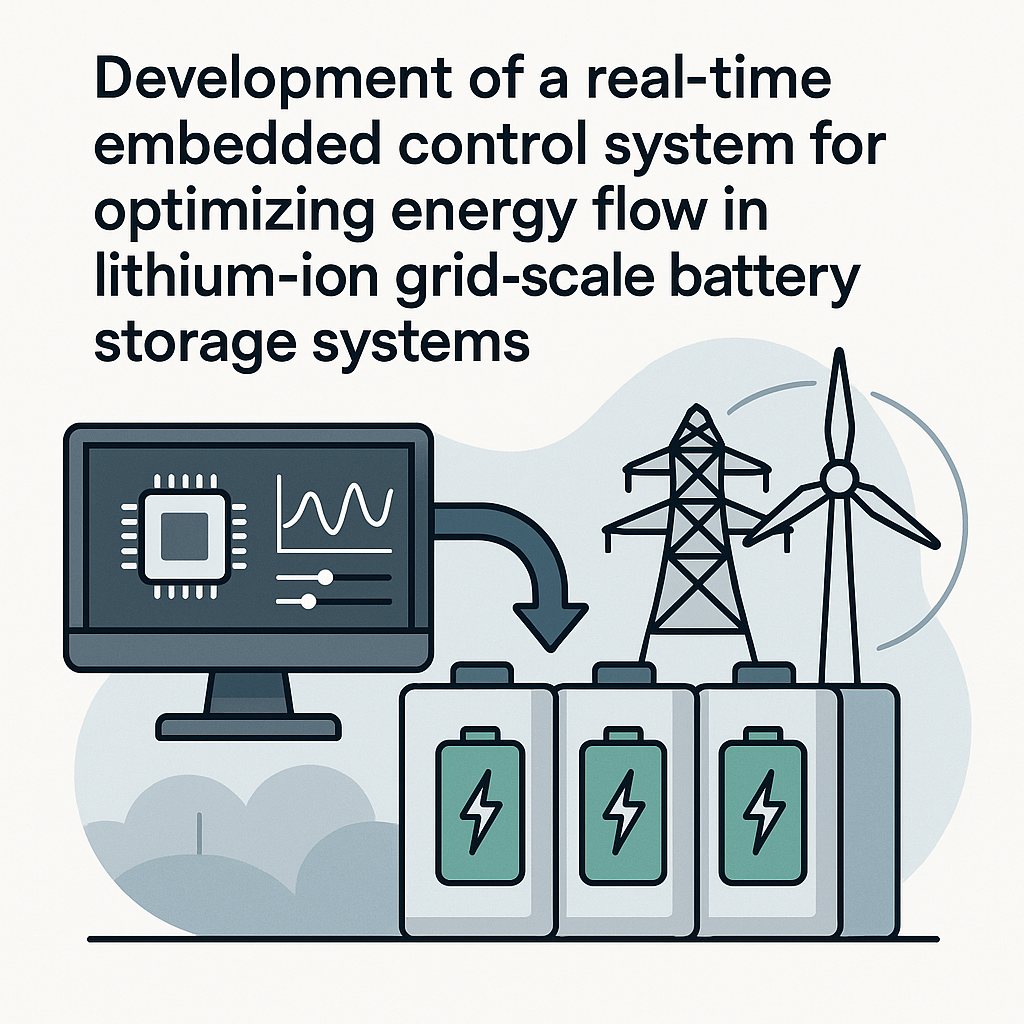Introduction
In recent years, the demand for energy storage systems has surged, especially with the increasing reliance on renewable energy sources. Lithium-ion batteries have emerged as a leading technology for grid-scale energy storage due to their high energy density and efficiency. However, to maximize the benefits of these systems, it is crucial to develop effective real-time embedded control systems that can optimize energy flow. This blog post delves into the development of such systems and their importance in enhancing the performance of lithium-ion grid-scale battery storage systems.
Understanding Lithium-Ion Grid-Scale Battery Storage
Lithium-ion batteries are widely used for energy storage in grid applications due to several advantages:
- High Energy Density: They can store a large amount of energy in a compact form.
- Long Lifespan: With proper management, they can last for many years.
- Fast Charging and Discharging: They can quickly respond to changes in energy demand.
However, to fully exploit these advantages, an efficient control system is essential.
The Role of Embedded Control Systems
Embedded control systems are crucial in managing the operation of battery storage systems. They perform several key functions:
- Monitoring: Continuously track battery parameters such as state of charge (SOC), temperature, and voltage.
- Control: Adjust the charging and discharging rates based on real-time data and external conditions.
- Optimization: Implement algorithms to ensure that the energy flow is optimized for cost and efficiency.
Key Components of a Real-Time Embedded Control System
Developing an effective real-time embedded control system involves several components:
- Microcontroller: Acts as the brain of the system, processing data and executing control algorithms.
- Sensors: Measure battery parameters and environmental conditions.
- Communication Interfaces: Enable data exchange between the control system, battery management system, and external networks.
- Power Supply: Ensures reliable operation of the control system.
Challenges in Developing Control Systems
While developing control systems for lithium-ion battery storage, several challenges must be addressed:
- Dynamic Behavior: The energy flow in battery systems can change rapidly, requiring real-time responses.
- Data Integration: Collecting and processing data from multiple sources can be complex.
- Algorithm Complexity: Developing algorithms that can optimize energy flow while considering various constraints is challenging.
Optimization Techniques
To effectively manage energy flow, various optimization techniques can be employed:
- Model Predictive Control (MPC): Uses a model of the battery system to predict future behavior and optimize control actions accordingly.
- Fuzzy Logic Control: Handles uncertainties and nonlinearities in the battery system, providing robust control strategies.
- Machine Learning: Leverages data-driven approaches to improve predictions and optimize energy management strategies.
Implementation of the Control System
The implementation of a real-time embedded control system involves several steps:
- System Design: Define the architecture, including hardware and software components.
- Algorithm Development: Create and test optimization algorithms using simulation tools.
- Prototype Testing: Build a prototype to validate the system’s performance under real operating conditions.
- Deployment: Implement the control system in the field and monitor its performance for continuous improvement.
Conclusion
The development of a real-time embedded control system for optimizing energy flow in lithium-ion grid-scale battery storage systems is essential for maximizing their efficiency and effectiveness. By addressing the challenges and employing advanced optimization techniques, these systems can significantly enhance the performance of energy storage solutions. As the energy landscape continues to evolve, the importance of such control systems will only increase, paving the way for a more sustainable and reliable energy future.



